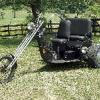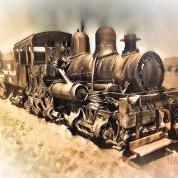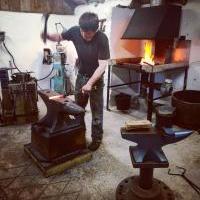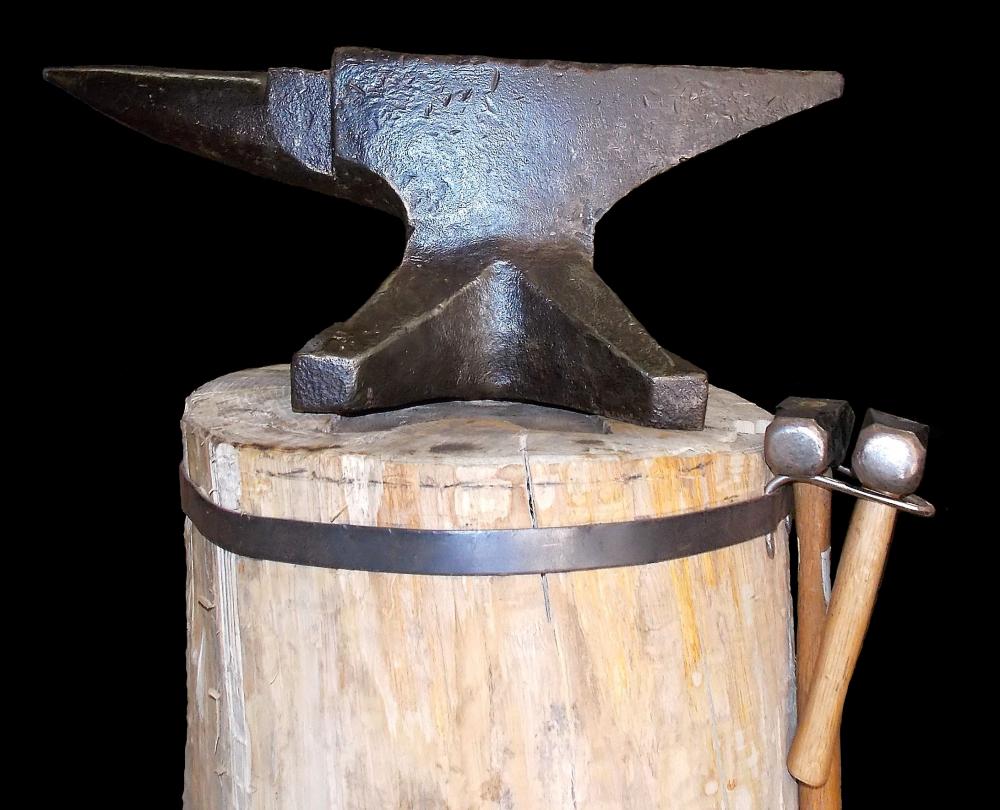-
Posts
786 -
Joined
-
Last visited
Contact Methods
-
Website URL
www.susquehanna-wd.com
-
Yahoo
mike@susquehanna-wd.com
Profile Information
-
Gender
Male
-
Location
South Central New York
-
Interests
Flintknapping, Blacksmithing, Indian Artifact Collecting
Recent Profile Visitors
4,170 profile views
-
Your thoughts on this anvil?
MC Hammer replied to Fly Fishing Nomad's topic in Anvils, Swage Blocks, and Mandrels
I would agree with Daswulf, it looks like he took an angle grinder to it to clean the face. Another serviceable anvil destroyed. No fault of yours, just an ignorant person on the other end of things. -
Just make sure you use the wire cup brush with the angle grinder and not anything abrasive that will remove metal. It doesn't need to be nice and shiny metal. The wire brush will help you retain a nice patina on it in the chocolate or dark gray color range. I wiped 5W 30 motor oil on mine and I wipe it down periodically. I haven't seen a bit of rust, so BLO isn't the only thing you can use on them. Good luck
-
Age of a Trenton Anvil
MC Hammer replied to Glenn Howard's topic in Anvils, Swage Blocks, and Mandrels
Looks like an early German Trenton. They have the feet on the bottom like a Peter Wright and no serial number. Also, the weight is always on the trademark side in between the legs of the anvil just like yours. An early German Trenton also will have a flat bottom, just like yours. It's likely yours was made before 1898 according to Anvils in America. Join the club, I have an early German Trenton as well. See the similarities? -
I'm a little late to this thread, but looking in my copy of AIA, on page 12 it shows this anvil and it's not the same anvil. It should have a 5th toe to even be of the same type. Sure, it's colonial by the looks, but I wouldn't even dream of paying $4,000 for it. Something about the horn doesn't look right either. On those old colonial ones you can usually see that the horn was forge welded into a slot in the front and this one looks solid cast almost. I've not seen too many of them in person though.
-
GFS, I looked in my copy of Anvils in America and it states that your anvil was made in 1920, so she turned 100 this year! Looks like 2,435 Trenton anvils were made that year. Pictures would be nice to see in the future because we all like to see pictures of anvils. Another thing to keep in mind is that age really isn't an indicator of anvil quality. You can have the oldest anvil in America and have it be a very poor performer as far as forging goes. Another thing you may notice about our little community is that we can be a difficult bunch at times. Have a thick skin and enjoy all the info that is here to read. Most folks serious about joining this community do offer a hello or introduction of some kind. I wish you well in your forging endeavors.
-
With that kind of money stored up, I'd be picky and wait out a great deal. I find people get into the most trouble with anvils when they are in a huge hurry to get one. They quit listening to that little voice inside their head that's telling them the things that are wrong with it. If you look carefully, $700 should buy you an anvil and a decent post vise. I have about $550 into my first anvil and post vise, and my second anvil and post vise cost me $100 total! $50 each for the anvil and post vise. Using the Thomas's applied method works very well, it's just not always an instant thing. My second anvil and post vise were as a result of applying Thomas's method the first time around. Word gets around. Be patient and avoid internet auctions, antique stores, and any situation where there's a huge amount of sentimental value attached to it. My second anvil was bought from a family member. He'd abused it some and it quite possibly went through a garage fire, but he couldn't remember. He said he'd give it to me so long as he could have it back if he ever decided he wanted it or that is son could use it at my shop if he wanted to. I told him that I'd rather pay him what he felt was fair and explained to him that the temper could have been ruined on it if it went through a fire. He said $50 and I agreed that I'd take a chance on it. Turns out it's got a 75% rebound and was quite usable.
-
Is this 160# fisher anvil worth the asking price?
MC Hammer replied to Hines's topic in Anvils, Swage Blocks, and Mandrels
My two cents isn't in opposition of those that are trying to encourage you to use something other than an anvil, but I don't know anyone who is happier with a piece of scrap steel than with their anvil. Sure, there are people out there doing great work on things other than anvils and yes the London pattern is relatively new as far as anvils go but I think most guys starting out will be happier with a London pattern anvil. Most smiths I know say the same thing, that they started out with a piece of railroad track or a cheap Harbor Freight anvil but now they have a London pattern anvil. My advice would be to get a London pattern anvil that you can afford. Don't be in a hurry to find the first one out there, but take time to look. It took me a year to find my first anvil and it was worth the weight. I was using an old cast iron anvil borrowed from my Dad, but I learned a lot using the horn, hardy and pritchel holes. I think your money will stretch further buying an old anvil. A few years ago I paid $1.29 a pound for my first anvil and it cost $300. When new smiths get all excited they end up buying junk they are not happy with in a few years. If you can't find an old one for what you have saved, keep looking and keep saving more money. You might just have $400 before you know it which should buy a decent old anvil of good weight. -
Help date/identify my anvil
MC Hammer replied to Bob Rankin's topic in Anvils, Swage Blocks, and Mandrels
Anvils In America dates your anvil to 1912. That year Columbus Forge & Iron Co made 7,999 anvils with yours being one of them. The last serial number that year was listed as 114000. I'd like to see a closer picture of the diamond logo though. That looks a little low on the anvil. It should say Trenton inside that diamond. I hope that helps. -
My Backyard Shop (Picture Heavy)
MC Hammer replied to jdoyle26's topic in Building, Designing a Shop
I have the same gas forge. You'll really like it a lot. I've used that side door so many times for odd shaped stuff. -
I got lucky with this Anvil!
MC Hammer replied to Scooter430's topic in Anvils, Swage Blocks, and Mandrels
Forge anything more yet Scooter? -
Help dating an early 1900s Trenton
MC Hammer replied to DreamsCrumble's topic in Anvils, Swage Blocks, and Mandrels
Dreams, Anvils in America puts that anvil in the year 1903. They started their serial numbers in 1898 presumably with 0. It looks like you have one of 8,000 or so anvils that were made that year. If I'm right, I guess that would qualify as an "early" Trenton anvil. We tend to think of "early" anvils as some of the first of it's kind made, or at least I do. The early Trenton's were the German Trenton's like this one. Notice the "feet" on the base? That's a dead ringer for an early Trenton, but Peter Wright anvils have the same feet and some think the early Trenton bases might have be made by Peter Wright or were surplus purchased or something along those lines. The early Trenton's have the diamond logo and the weight is between the legs like the below picture. That's a great story about your grandpa's shop. It's good that you kept this anvil. For being in a service station it's in pretty good shape. Most service stations weld on anvils and pound cold metal on them causing terrible damage that we all have to live with today. Hope this helps. -
250 lb Hay Budden for $4 a lb?
MC Hammer replied to Manno's topic in Anvils, Swage Blocks, and Mandrels
It's quite common to see that on the side of anvils and is not necessarily a sign of delamination of the hard steel face. If you just look at 100 anvils you will see similar marks on 98 of them most likely. If you tap the face with a hammer you should hear a "Ping-ping-ping". If it sounds dead there or makes a different buzzing ring sound you have a problem. It's why it is so important to do proper testing on an anvil prior to purchasing it. -
Very true Thomas! I'm thinking since they are students, they will be learning with small stuff.
-
Remember to always have the anvil, forge and post vise set up to work in a triangular pattern. It's really more efficient to have each of those important tools a step or two away from each other. I'd think several stations set-up like that for students.
-
I feel your pain Owen. I had to tear down a cabin on the land we bought this year, move all the parts, and rebuild it. I was stuck with a lot of the cob-job things the guy who built it did. I corrected as many as I could along the way. Greater than 7/12 pitch on my roof. I am worried about your pitch though because you can get a pretty severe snow load in Maine. That load transfers to your walls so you'll need to look at rafter ties and such to keep those walls from wanting to spread out under a full snow load. Anymore updates?





